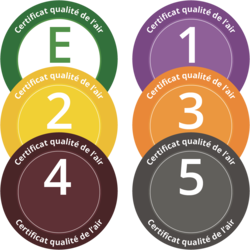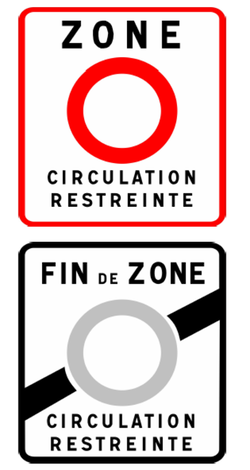Name of the environmental zone: Environmental zone Clermont-Ferrand ZFE - France
Date of entry into effect of the zone: 01-07-2023
Type of environmental zone: permanently valid, 0:00 - 24:00h
Not allowed to drive (temporarily): Information currently unavailable
Not allowed to drive (permanently): Type of vehicle: van (N1), truck (N2,N3).
Sticker: without sticker
Fines: 68-450€
Area/extension of the environmental zone: The zone extends only in the Clermont part of the double city. Clockwise these are the streets: Blvd. M. Pourchon, Blvd. St. Jean, Blvd. J. Bingen, Blvd. Berthelot. The mentioned streets are not part of the zone.
Contact of the environmental zone and exceptions: hmoreigne@clermontmetropole.eu
Exemptions: Doctor, Fire brigade, Military, Police car, Customs, Snow plough, Public bus and Ambulance
Environmental zone ZFE
Do I need stickers or registrations?
To enter the low emission zone, each vehicle concerned requires a valid French environmental sticker (Certificat qualité de l'Air). Otherwise, a fine of 68 euros to 375 euros is to be expected.
What is a ZFE zone?
The ZFE zones (Zone à Faibles Émissions), which were still called ZCR zones from 2016 to the end of 2019, are fixed zones that can be identified by traffic signs.
The establishment of a ZFE in France is the responsibility of the respective city or municipality and is regulated by the national decree Décret ZCR 2016-847 of 28.06.2016. After a 6-month legal consultation procedure, which also provides for a right of participation of affected persons, the zone can come into force.
In order to be able to travel in the ZFE environmental zones established by cities or municipalities in France, a Certificat qualité de l'Air is then required, which is allocated to 6 categories.
The respective city or commune determines which sticker classes may enter when. On an additional sign, under the actual ZFE sign, days and times are indicated at which one may enter with a certain French vignette.
In the long term, more and more vignette categories are being excluded from entering low emission zones, so that in some years only categories E and 1 will be allowed to enter.
In a ZFE zone, vignette colours are permanently excluded and do not depend on the respective weather conditions. However, it is possible that a ZFE and a ZPA zone overlap. If driving bans are then imposed within the ZPA zone due to the weather, these also apply to the ZFE/zone. In this case, the rules of the ZPA also apply to the ZFE zone.
However, if the ZFE zone is not within a ZPA zone, this case cannot occur and the rules are unchangeable.
How do I recognize the low emission zone?
The beginning and end of the environmental zones are marked with signs. This shows a red circle as a prohibition sign with the remark "Zones à Circulation Restreinte" (Restricted Zone). Exactly who may or may not enter the zone is not indicated by the entry sign.
In our Green Zones App we have a detailed map of each low emission zone. So you can easily see the boundaries and avoid penalties.
Are there other low emission zones in France?
Yes, a lot of them. France has over 30 different environmental zones. These differ in ZFE (permanent), ZPA (temporary) and ZPAd (temporary département) zones.
In our Green Zones App we have gathered together all the low emission zones in Europe and presented them clearly.
Good to know...
All current driving bans and further information are available in our Green-Zones App.
Are night-time environmental zones coming?
The Berlin Green Party recently presented a proposal to equalise the traffic congestion in the capital. The idea is to shift delivery and commercial traffic to the night-time hours. According to Antje Kapek, transport spokesperson for the Greens, this proposal should help to ensure that delivery vehicles, refuse collection, care services and doctors get stuck less in congested and parked-up streets during the day. Low-noise and low-emission lorries could increasingly drive into cities at night and on special routes.
Bicycle instead of car - Paris in transition
A study by a public foundation has shown that more than one in ten journeys in Paris and the surrounding area are made by bicycle. This is a remarkable increase compared to 14 years ago, when less than one in thirty journeys were made by bike. Paris seems to have been endeavouring to change its transport policy for years. With more cycle paths and cycle lanes, fewer car parks and higher parking charges, the city is trying to promote cycling and reduce car traffic. But what does this mean for the existing low emission zone?



![[Translate to Englisch:]](https://www.green-zones.eu/fileadmin/_processed_/8/3/csm_screenshot_2024-04-18_125614_c7d9eca4a5.png)
![[Translate to Englisch:]](https://www.green-zones.eu/fileadmin/_processed_/2/0/csm_screenshot_2024-04-18_121908_5e1053efaf.png)